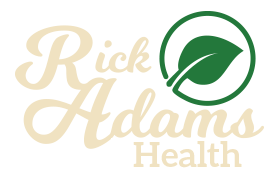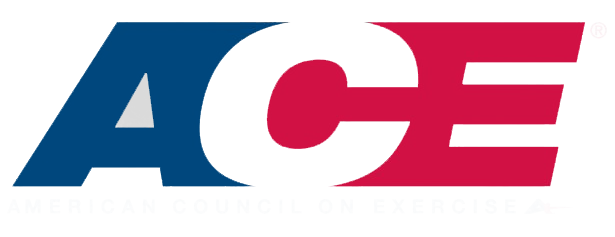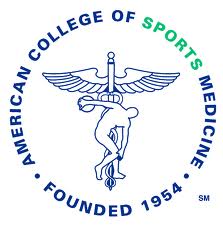3 Types of People That Work With A Personal Trainer
Consulting and using a Personal Trainer can be a great way to help meet health and fitness goals. A Personal Trainer helps people exercise and improve their health and can assist you in a gym, outdoors, or even meet you at your home for a workout. There are many reasons that someone may hire a Personal Trainer. Let’s go over a few types of people that would work with a Personal Trainer.
-
Are you brand new to exercise or the gym?
Walking into a gym can be intimidating when you do not know how to use the equipment. There are machines, free weights, and bands that all have specific uses. Each exercise should be performed with proper posture and technique to work the intended muscles and to reduce the risk of injury. A Personal Trainer can teach you how to use all of these types of exercise equipment with safe and proper technique.
-
Do you struggle with motivation?
To reach your health goals it is important to stay consistent with your healthy habits. This means you have to keep yourself motivated long term to stay consistent with your physical activity. For certain people this can be difficult. Starting and stopping your exercise routine will only lead to plateaued results in the long run. Working with a Personal Trainer can help you maintain accountability and motivation in the long term, which will help you reach your goals.
-
Do you find your exercise routine boring and your routine stale?
Maybe you do exercise consistently but you find the same exercise routine dull after months or years. Working with a Personal Trainer can bring ideas to help keep your exercise routine new and interesting. Maybe you are used to using machines and doing body weight exercises but have never tried exercise bands, free weights, plyometrics, TRX, etc. A Personal Trainer can open up new ways for you to exercise that you may have never tried before.
There are many reasons why you would work with a Personal Trainer. If you are currently searching for a Personal Trainer try to find one that makes you feel comfortable, is open to help you reach your health goals, and provides the best service possible. A Personal Trainer can be a great tool to assist you in losing weight, build muscle strength, or help maintain strength into older age.
Contact Rick Adams Health Coaching for Personal Training to meet your health needs.

CHES, ACSM Certified Personal Trainer, ACE Health Coach, AFPA Nutrition & Wellness Consultant
Wait, Coconut Oil is BAD for You?
The AHA (American Heart Association) recently published an article claiming that coconut oil is not part of healthy eating habits. This announcement has come as a surprise to many that consider coconut oil to be a healthy alternative to other food items like butter or margarine. If you search enough, articles about the wonders of coconut oil range from weight loss, heart health, skin moisturizer, and even hair conditioner. So why has the AHA come out and made these claims telling individuals to avoid coconut oil? How can a natural food item be detrimental to one’s health? Let’s look more closely into the AHA’s claims on coconut oil.
The claim the AHA is making is actually fairly simple; they are stating the fact that coconut oil is high in saturated fat. Yes, that is very true. Saturated fat is often referred to as the “bad fat,” while unsaturated fat is often known as the “good fat”. The container of organic coconut oil I have contains 14 grams of total fat, which is made up of 13 grams of saturated fat and only 1 gram of unsaturated fat. That is a large proportion of saturated fat.
Fats Impact on Heart Health
Saturated fat is considered “bad” because it has often showed in scientific tests to raise the LDL (Low density lipoprotein) cholesterol in the body. When the LDL cholesterol is much higher than the HDL (High density lipoprotein) cholesterol, which raises the risk of heart disease. This can result in plaque building up in the lining of blood vessels. If the plaque interrupts the flow of blood enough, then a heart attack can occur. If some of the plaque breaks off and travels through the bloodstream, it can cause a stroke.
Possible Benefits of Coconut Oil
It may seem fairly cut and dry that coconut oil is bad, but some coconut oil advocates are not convinced, stating that the type of saturated fat in coconut oil is still actually good for them. Look at any container of coconut oil and it will likely boast that it is high in MCT’s (Medium chain triglycerides) and high in lauric acid. This starts to get into the area of chemistry, but the question remains, is coconut oil bad for you?
Personally, I enjoy the taste of coconut oil but I would recommend it in moderation. Do I believe it is a miracle food that should be cooked with and slathered on many of your meals? Not really. If you use coconut oil for hair or skin care, feel free to continue as it will not impact your health negatively. Foods that have large amounts of saturated fat like coconut oil have been shown to negatively impact heart health, a particular area of health I study closely. Will future research give us a definitive answer on this coconut question? Possibly. I would not say to cut out coconut oil altogether from your diet, but from the current research, I would say it is best to use it sparingly.

CHES, ACE Health Coach, AFPA Nutrition & Wellness Consultant
2 Simple Ways for a Healthier 4th of July
The 4th of July is synonymous with gathering alongside friends and family, fireworks, and grilling. As with most holidays, greasy foods, lots of beer, and lounging around are common with 4th of July celebrations. There are options you have to keep this holiday healthier better food options and physical activity.
Be Active
The 4th of July is a time to be spent with friends and loved ones. But that does not mean you have to be setting around all day/ Take advantage of the summer weather and everyone being together. Maybe it is a friendly game of football in the backyard or running around with a soccer ball at the park. Whatever your group of finds fun and gets everyone active is a great idea.
Grilling is Not Just for Meat
When it comes to grilling, everyone has their favorite foods. Steak, hotdogs, hamburgers, bratwursts, etc. But the grill is not just for the meats. There are quite a number of vegetables, and even some fruits that are great options when cooked on the grill. Corn on the cob is not uncommon to have grilled, but try zucchini, portobello mushrooms, and my personal favorite, asparagus. They all taste great on their own and are easy to flavor for your desired taste. Portobello mushrooms make a great meatless substitute for a hamburger. For a little sweetness, add some fruit on the grill. Pineapple, cantaloupe, and peaches help add variety to your grilled meals with a smoky, sweet flavor. So clear some space on the grill for the fruits and vegetables to make your meals healthier and more flavorful.
It does not take drastic changes to make your holidays healthier. Keeping active and adding fruits and vegetables to your cookouts can help stay in shape and avoid putting on unwanted weight. Make sure to have some water alongside your beer or soda to stay hydrated on these warm summer days. Give some of these small changes a try and enjoy your 4th of July holiday.

CHES, ACE Health Coach, AFPA Nutrition & Wellness Consultant
Healthy Substitutions for Salt (Part 2)
This week, we continue to look at alternative ways to keep meals flavorful while cutting back on the salt. In part 1, we covered 3 different ways to add healthy flavor alternatives to your meals. Today, let’s look at three more options available to you.
Cayenne
If you like a little heat with your meals, then cayenne pepper is a great option. It can be purchased in small bottles as cayenne powder or cayenne flakes. Cayenne pepper can be strong; make sure to start with a small amount at first in order to see how much you prefer. Add a pinch to soups and dips to enhance flavor or as a marinade to meat dishes. Studies have shown that cayenne pepper may act as a useful vasodilator, which helps expand your blood vessels. The result is a decrease in blood pressure helping to preserve heart health.
Turmeric
Turmeric is a spice that comes in powder form and is known for its distinct orange yellow color. It is popular in Asian, Middle Eastern, and northern African dishes. Turmeric is used to flavor rice, curry dishes, and can be combined with ginger when added to meat dishes. It has recently been touted as one of the best spices to add into healthy eating habits. Studies have shown that turmeric may be one of the best anti-inflammatory aids and may improve the health of the inner lining of blood vessels.
Vinegars
There are a wide array of vinegars with a variety of flavors that can be used to flavor your foods. Most vinegars have 3 to 4 milligrams of sodium per tablespoon, which is quite low. The most popular versions of vinegar for flavoring are balsamic vinegar, red wine vinegar, and a mix of vinegar and olive oil. Vinegar can be added to sauces, used as a topping, or used as a side garnish. Some studies have shown that vinegars may assist to improve insulin resistance and are high in certain antioxidants.
Now, when you think about “eating healthy”, it doesn’t have to be boring or flavorless. There are many more options to flavor your foods out there, not just salt. Obviously, there will be certain flavorings you will like and some you will not enjoy. Give them a try and see which flavorings you can add to your eating habits.

CHES, ACE Health Coach, AFPA Nutrition & Wellness Consultant
Healthy Substitutions for Salt (Part 1)
When a client begins to consider ideas to improve their eating habits, I often hear they will need to cut back on a few food items that they normally consume. One of those is salt, a food item that is often used to make food taste better but is recommended to be kept low in our daily eating habits because excess salt can lead to higher blood pressure levels. When salt is reduced, some individuals worry their food will be boring, mundane, and flavorless. Thankfully, that is not the case. Let’s look into a few items you can use to enjoy your meals while making a change towards healthier eating habits.
Citrus
A great replacement for salt to add flavor to meals. Different types of citrus and zests exist, so there are multiple options available. Orange, lime, and lemon all fall under the citrus family. They can be purchased in their bottled extract form or can be squeezed directly onto food in their natural state. Not only are salt levels lowered, but adding citrus to foods will increase your intake of vitamin C, potassium, and B vitamins. If you enjoy a light, sour zest flavor, then citrus is a great option.
Garlic
Garlic and garlic powder can also be used as a salt substitute. It has a pungent taste but becomes much weaker tasting when cooked. It can be diced and put directly on foods, or you may choose to use a small bottle of garlic powder to flavor foods. I recommend avoiding garlic salt as it is a mix of garlic powder and salt, but mostly salt. Garlic has been shown to also have health benefits. Studies have shown that doses of garlic help thin blood and reduce risk of stroke. Garlic is also a good source of manganese, vitamin B6, and vitamin C.
Ginger
Ginger is a unique spice known for its trademark flavor. It has a mild spicy flavor, but also a hint of sweetness. Fresh ginger has less of a spicy flavor and is sweeter. Ginger is traditionally used in Asian dishes but by no means is limited to just that. It can be used to sweeten seafood dishes and add flavor to chicken meals. Ginger is also a good source of vitamin B6, magnesium, and manganese. Studies have shown that ginger has properties that assist in reducing inflammation.
These are just some options available that can be used to give your food more flavor when trying to reduce your salt intake. Next week we will go over three more items you can use in place of salt to avoid boring and flavorless meals.

CHES, ACE Health Coach, AFPA Nutrition & Wellness Consultant
No Wrong Way to Get Started
We all have our own unique motivations for living a healthy lifestyle. When it comes to exercise, there are many ways people become active, like sports or training with a friend. There is no wrong way to get started being physically active. I had a fairly unique beginning which grew to much more over time.
As a young child, I played sports like baseball and hockey; I never saw that as exercise, and I never trained outside of those sports. I quit playing sports while I was still young and remained inactive for several years. I put on weight and was quite out of shape. (The required one mile run in gym class soon became my nemesis) What lead to my return to being physically active was actually more accidental than intentional.
I was recently asked what inspired me to make exercise a priority in my own life. Honestly, I could not remember how I started being active on a regular basis, but after a day of dwelling on that question, the answer came back to me. In eighth grade, I was a huge sports fan and would watch ESPN as much as I could, especially in the morning before school. ESPN was channel 25, and ESPN 2 was channel 27. I would flip back and forth between the two channels to watch as much sports coverage as possible. As I flipped between ESPN and ESPN 2, I would often see a flash of a bright, beautiful beach that caught my attention. It was channel 26, and I eventually decided to stop and see exactly what it was.
Channel 26 was Lifetime, “Television for Women.” It was Denise Austin’s morning workout show. Whether I stopped for the beautiful beach or the pretty woman, I can’t really seem to remember. I watched it in little bits during ESPN commercials and I began to say to myself, “I can do this.” So I did. I started slowly doing body weight exercises in my bedroom before school. This was the beginning of my regular exercise routine. To this day, some of my favorite core exercises are ones I learned from her shows. After following along in my room for a few episodes, I started to feel stronger and began to look more toned. Probably not how most teenage boys start a regular exercise regimen.
So why share this funny tidbit about my life with you? There is a very important lesson to be learned from this story. As I stated, the beginning of my regular exercise routine was different than many other teenage boys my age. That is exactly the point of this story. There is not a wrong way to get started with your exercise routine as long as it is done safely. Whatever type of exercise you start with is OK, there are so many types of exercise and ways to get started. Whatever way you decide to start can lead to more success down the line. You just have to get started.

CHES, ACE Health Coach, AFPA Nutrition & Wellness Consultant









